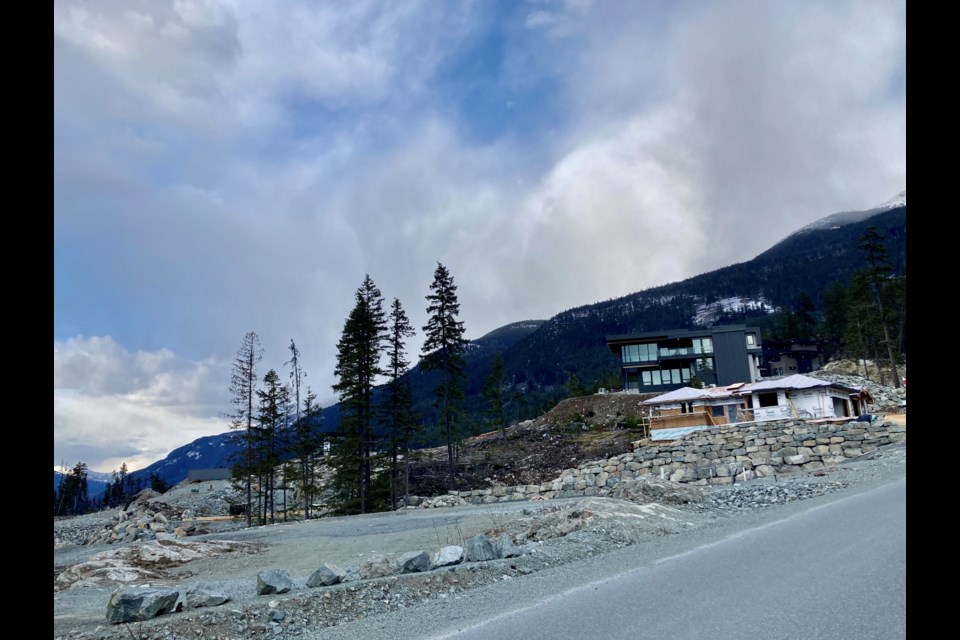The WedgeWoods community, 15 kilometres north of Whistler, may soon expand with dozens of new homes.
At its Dec. 14 meeting, the Squamish- Lillooet Regional District (SLRD) board of directors moved proposed bylaw amendments that will essentially create a new subdivision in WedgeWoods through first reading.
If approved, the amendment would add 18 new lots—12 market strata and six non-market—for housing developments over 62.87 acres, bringing the total in WedgeWoods to 126 lots.
The six non-market lots will be located between Highway 99 and Riverside Drive, and offered for $225,000, with $200,000 going to the SLRD as part of its amenity contribution agreement. Lot pricing and building value will increase in line with the Consumer Price Index. A market lot in WedgeWoods is going for about $2 million in 2022.
According to project proponent David Ehrhardt, the non-market lots came about due to a desire from the regional district to open the neighbourhood to a wider variety of people in the corridor.
“[The non-market lots] came about as a result of discussions jointly because the SLRD staff wanted to see a little opportunity for a slightly more affordable area in WedgeWoods, where individuals employed in the corridor have an opportunity to buy in,” Ehrhardt said.
Under the proposed bylaw, all the new lots must have a secondary suite or auxiliary dwelling unit in addition to the main house. These dwellings will be subject to occupancy requirements and covenanted to ensure long- term rentals.
There are no stipulations on how much the units can be rented for in the market lots. As determined by BC Housing, the six non-market lot secondary suites or auxiliary dwelling units will have rental caps set between 28 to 30 per cent of low and moderate-income limits.
The secondary suite requirements aim to achieve a similar objective to a proposed bylaw amendment brought forward earlier this year which would allow all properties in the community to add additional suites and auxiliary dwellings for long-term rentals. The minimum lot size in the neighbourhood is a half-acre, so there is ample room on most properties for auxiliary dwellings.
“It’s good to see any new affordable housing that provides rental suites. There are some ownership units. I think that is all positive,” SLRD Chair Jen Ford said.
“There’s no question in anyone’s mind that our corridor is under a lot of pressure to build and to make available more housing in all of its forms, and so this is just one of the forms that our communities need.”
In addition to the new housing lots, the proposal also includes a sizable 307-acre land donation on the western side of the highway, where a substantial non-market affordable housing project was previously proposed in 2019.
The SLRD rejected the “WedgeWoods West” affordable housing project on first reading in a close 6-4 vote, with the majority of opposition coming from Squamish and Whistler representatives.
The bylaw also requires the developer to contribute $15,000 to the SLRD to create a transit stop and bus shelter on either Highway 99 or Riverside Drive.
According to Ford, the bus infrastructure is essential, as it will play into the broader goal of creating a regional transit system.
“The idea is that we want to make it easy for transit to stop there to pick people up, and currently, there’s no bus infrastructure that goes into WedgeWoods,” Ford said.
“The Pemberton commuter bus, for example, drives right by, so putting a stop on the north side of the highway will help, and then figuring out a way to have a stop headed southbound or to have the bus come into the development to pick up southbound traffic.
“Our hope is that we get our regional transit system, and when you add a development like this, I mean, the developments are already there. But if we can get regional transit going past there and picking people up, that helps further create the evidence for the regional transit system and why we need it.”




